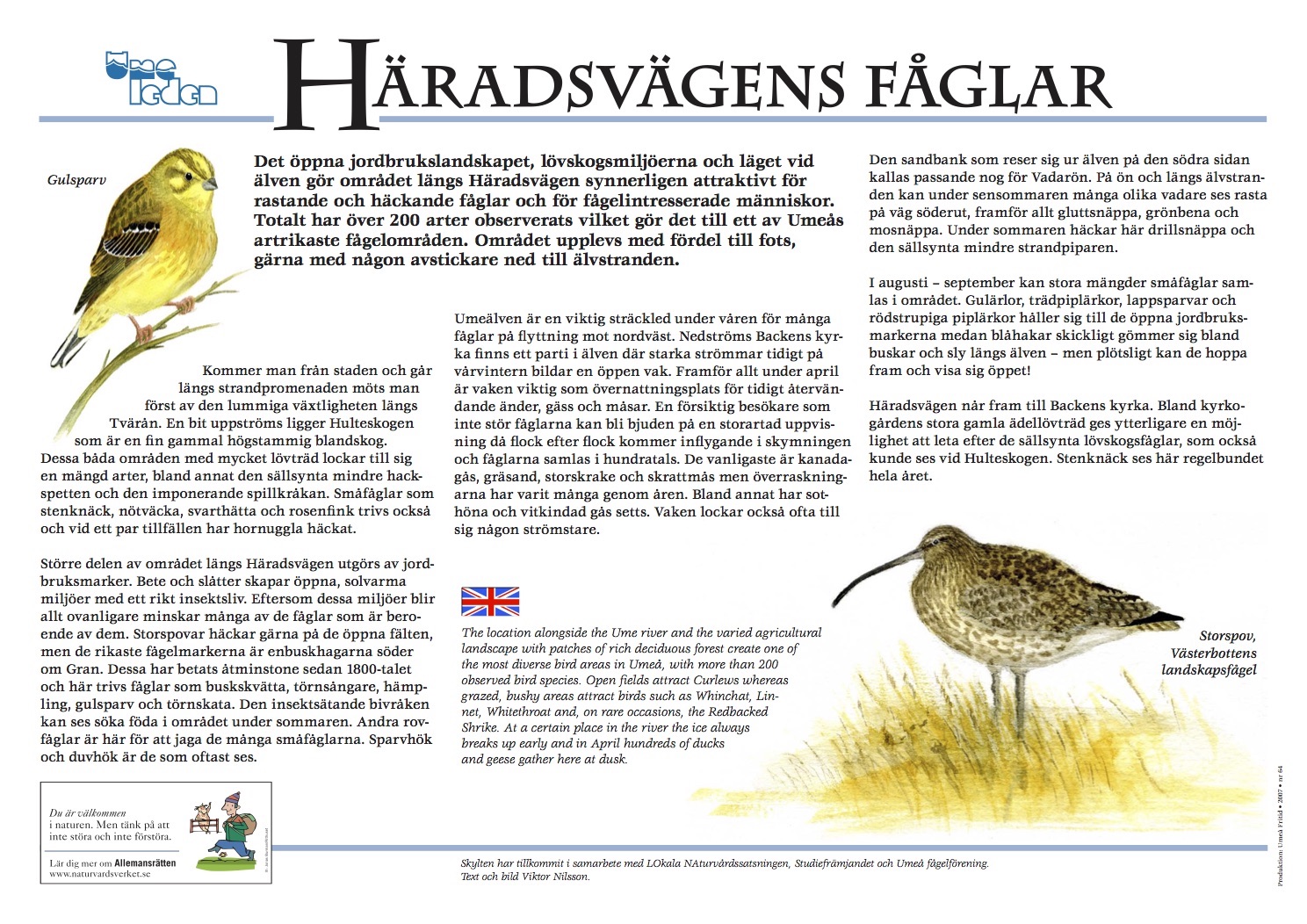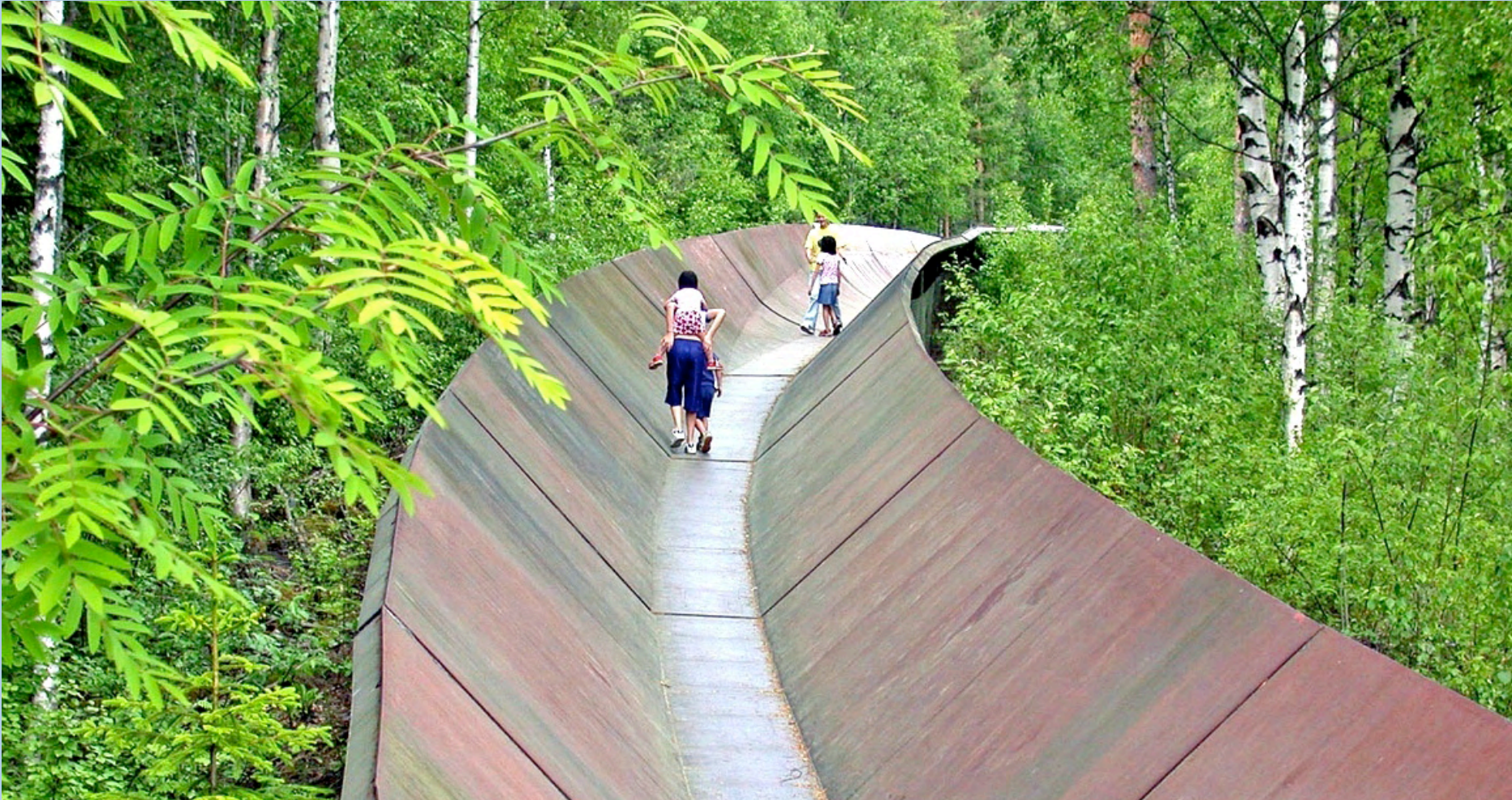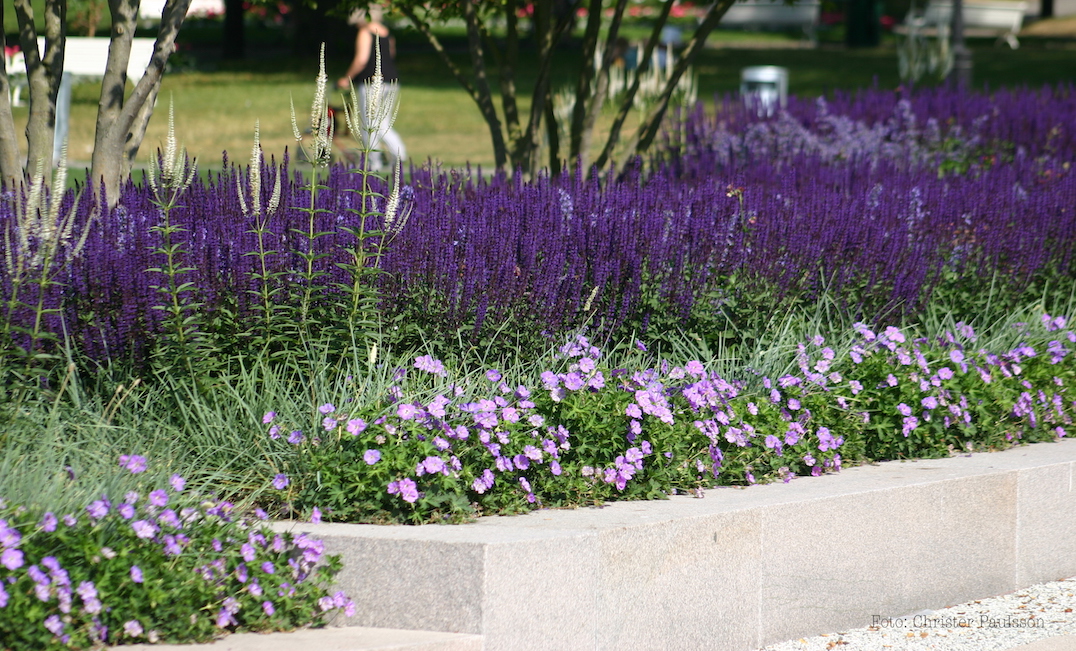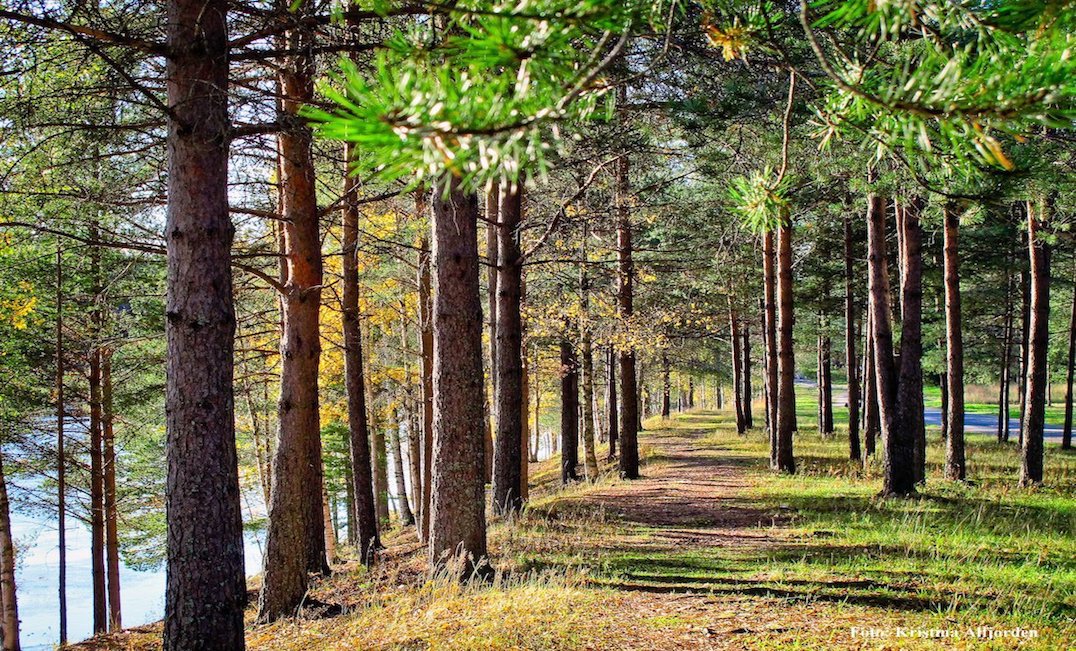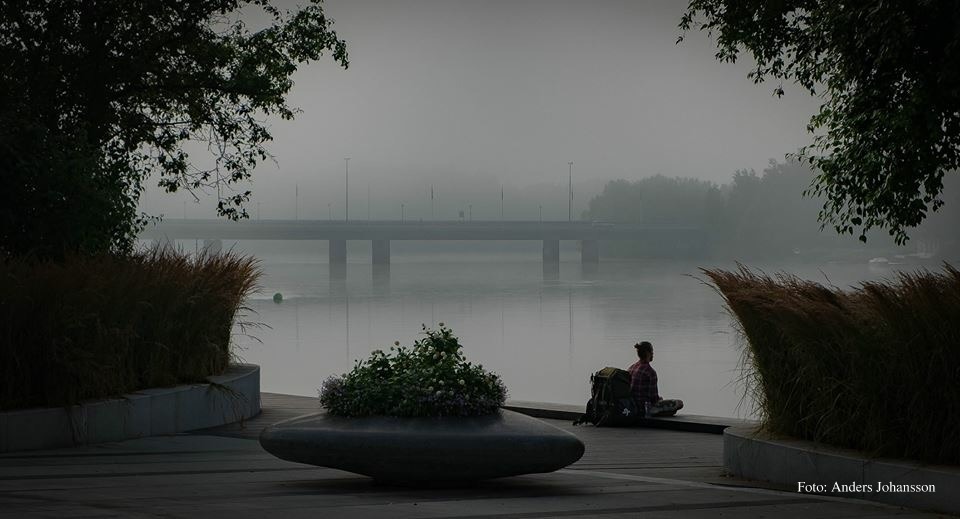Project Description
Strandpromenaden, the river walk, is a long and narrow stretch of green space between the river and the city. The walk is situated along the river’s northern bank and in the 1950s, people began emphasizing in earnest the importance of preserving the river’s beautiful banks and making them accessible to city residents. It was considered particularly urgent to protect the riverbank upstream, from the old bridge, an area intended to create joy for the city’s residents.
The decision was taken in 1958 to create the river walk. The western part of the river walk is by the water’s edge, just below the steep northern riverbank. Initially, the vegetation is dense and leafy. In the last section towards the marina, the plant life along the river is more open and sparse. Trees and bushes line both sides of the gravel-covered walking and cycling path. There are benches along the entire stretch.
The eastern section of Strandpromenaden runs from Sofiehem via Öbacka Park, to Rådhus Park, creating a long, open park along the river. Öbacka was the city of Umeå’s first industrial area. In 1896, a joinery factory was built here, and later a planing mill, mechanical workshop and a foundry were added. In 1909, Egil Unander-Scharin built a pulp mill that was in operation until 1945. The building was totally refurbished in the mid-1980s, and since 1987 the premises have been used by the Umeå Academy of Fine Arts.
Most parks along the river are newly landscaped or renovated. The Öbacka area has several new parks, such as Öbacka strandpark, Djupbäcksterrassen, Östra planteringen and Öback Park. Årstidernas park, Rådhusparken, Skeppsbron and Sparken are also newly landscaped, while Broparken has been fully renovated.
